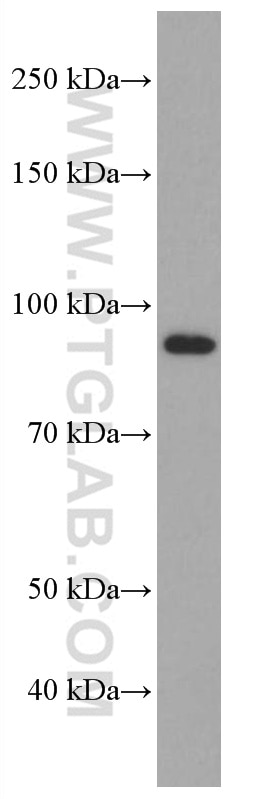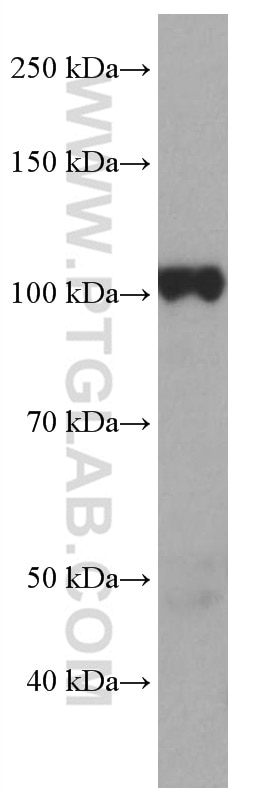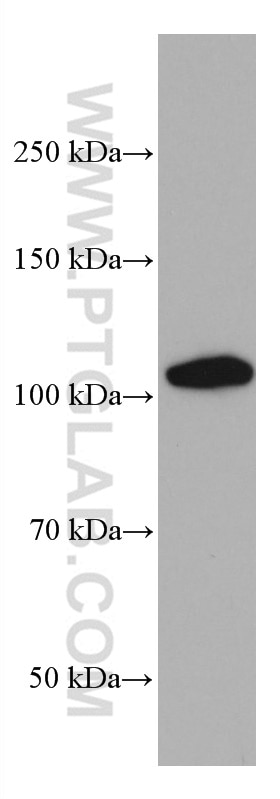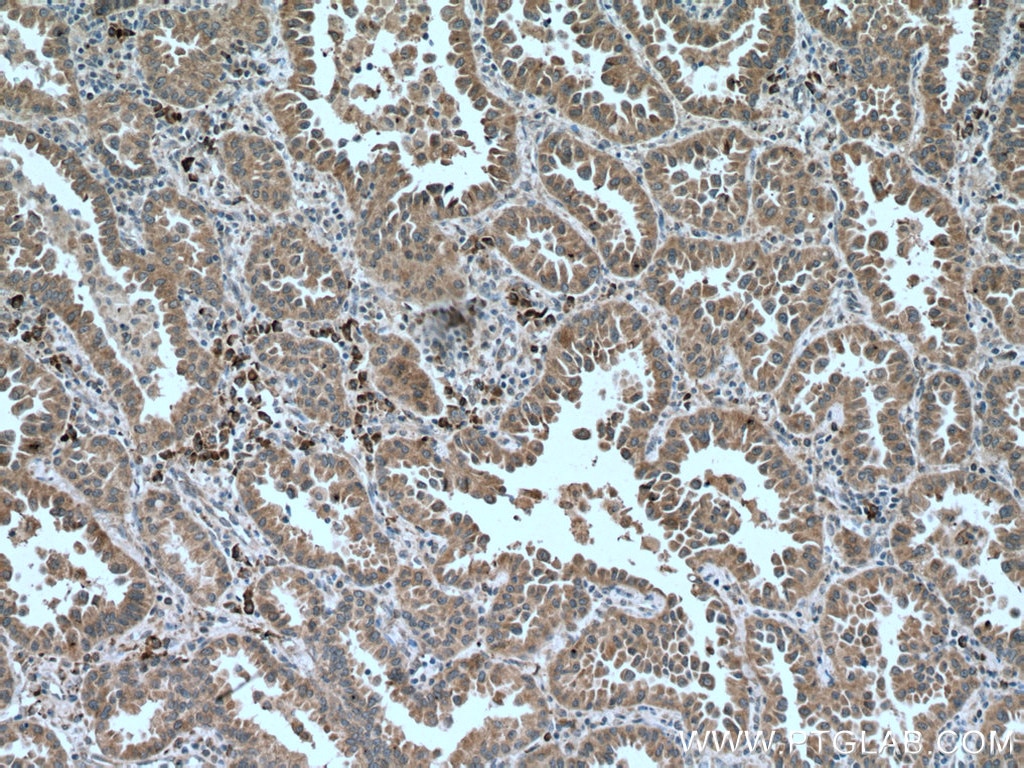Anticorps Monoclonal anti-PHEX
PHEX Monoclonal Antibody for WB, IHC, ELISA
Hôte / Isotype
Mouse / IgG1
Réactivité testée
Humain, porc, rat
Applications
WB, IHC, ELISA
Conjugaison
Non conjugué
CloneNo.
1D4B2
N° de cat : 66934-1-Ig
Synonymes
Galerie de données de validation
Applications testées
| Résultats positifs en WB | cellules HEK-293, tissu pulmonaire de porc, tissu pulmonaire de rat |
| Résultats positifs en IHC | tissu de cancer du poumon humain, il est suggéré de démasquer l'antigène avec un tampon de TE buffer pH 9.0; (*) À défaut, 'le démasquage de l'antigène peut être 'effectué avec un tampon citrate pH 6,0. |
Dilution recommandée
| Application | Dilution |
|---|---|
| Western Blot (WB) | WB : 1:500-1:3000 |
| Immunohistochimie (IHC) | IHC : 1:250-1:1000 |
| It is recommended that this reagent should be titrated in each testing system to obtain optimal results. | |
| Sample-dependent, check data in validation data gallery | |
Applications publiées
| WB | See 2 publications below |
Informations sur le produit
66934-1-Ig cible PHEX dans les applications de WB, IHC, ELISA et montre une réactivité avec des échantillons Humain, porc, rat
| Réactivité | Humain, porc, rat |
| Réactivité citée | rat, Humain |
| Hôte / Isotype | Mouse / IgG1 |
| Clonalité | Monoclonal |
| Type | Anticorps |
| Immunogène | PHEX Protéine recombinante Ag20290 |
| Nom complet | phosphate regulating endopeptidase homolog, X-linked |
| Masse moléculaire calculée | 749 aa, 86 kDa |
| Poids moléculaire observé | 76-80 kDa, 95-100 kDa |
| Numéro d’acquisition GenBank | BC105059 |
| Symbole du gène | PHEX |
| Identification du gène (NCBI) | 5251 |
| Conjugaison | Non conjugué |
| Forme | Liquide |
| Méthode de purification | Purification par protéine G |
| Tampon de stockage | PBS with 0.02% sodium azide and 50% glycerol |
| Conditions de stockage | Stocker à -20°C. Stable pendant un an après l'expédition. L'aliquotage n'est pas nécessaire pour le stockage à -20oC Les 20ul contiennent 0,1% de BSA. |
Informations générales
PHEX encodes a transmembrane endopeptidase that belongs to the type II integral membrane zinc-dependent endopeptidase family. The protein usually expressed in osteocytes, osteoblasts and odontoblasts, and it was thought to be involved in bone and dentin mineralization and renal phosphate reabsorption (PMID:28982589). Otherwise, studies showed that PHEX transcripts were identified in human osteosarcoma-derived cells and in differentiated mouse osteoblasts, but not in immature mouse preosteoblasts, indicating the stage-specific expression of the protein (PMID:9199999). Defects in PHEX are responsible for X-linked hypophosphatemic rickets (HYP) (PMID:22339660). Glycosylation of proteins results in higher molecular weight, and about 95-100 kDa band were reported (PMID:25128529; PMID:18728349).
Protocole
| Product Specific Protocols | |
|---|---|
| WB protocol for PHEX antibody 66934-1-Ig | Download protocol |
| IHC protocol for PHEX antibody 66934-1-Ig | Download protocol |
| Standard Protocols | |
|---|---|
| Click here to view our Standard Protocols |
Publications
| Species | Application | Title |
|---|---|---|
Acta Biomater Osteoinductivity and biomechanical assessment of a 3D printed demineralized bone matrix-ceramic composite in a rat spine fusion model. | ||
J Clin Endocrinol Metab Characterization of novel PHEX variants in X-linked hypophosphatemic rickets and genotype-PHEX activity correlation |





